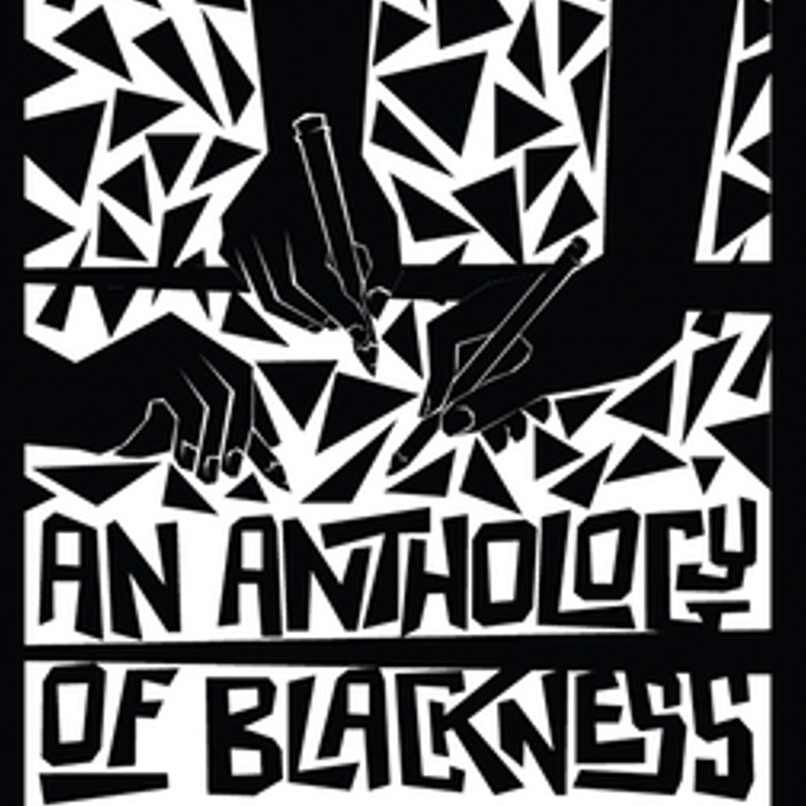
December 31, 2009
The Motivational Industrial Complex

As a kid I was told by a psychologist that I had Schwindelerregende Minderwertigkeit Komplex (vertiginous inferiority complex). I can tell you this: the fact that I couldn’t pronounce the damn term did not help me feel any less Minderwertigkeit. The “Komplex,” a popular way in the 50s and 60s to bundle growing mass of modern day, baby boom neuroses, was earlier proffered by Carl Jung who described a “Komplex” as a node, a knot of unconscious feelings and beliefs, detectable through behavior that is puzzling or hard to find a cause. Back in the 60s we all had them — inferiority being the biggie — and especially baby boomer kids whose middle-class parents poured over popular psychology books and religiously listened to TV personalities like Dr. Joyce Brothers with her populist psych-ad-vice.
Like so much of the behavioral mumbo-jumbo we were fed as children, we either compensated or grew averse, skeptical, dependent (or all three) as we matured. I was mired in complexes until my twenties and sought out public experts — like Dale Carnegie (1888-1955) — who had the answer to untying the knots, building confidence, developing interpersonal skills, and taught how to be successful at business. His bestselling How to Win Friends and Influence People (first published in 1936 and still in print) was a fixture in my house. My father swore by it. I swore at my father for trying to fill me full of motivational babble. We eventually reached an understanding, he’d win friends and influence people and I’d retain my Minderwertigkeit.
This all goes to say, that I have a knee-jerk distaste for motivational books. Have you ever read or listened to one? If you have and its helped, then more power to you! I have no interest in the majority of inspirational, aspirational, pseudo-psychological, personal, anecdotal, confessional, and professional behavioral guides. They fill shelves with a surplus of lame philosophic (with emphasis on sophistry) and homespun wisdom. The genre, a kind of patent medicine between covers, oozes with quackery or nonsense. Nonetheless we all need consul, advice and comfort from time to time, and reading someone else’s formula is probably healthier than joining a cult, maxing out a credit card, or eating gourmet doughnuts.
I avoid all motivational advice and the minute I read the proclamation “do what I suggest . . . and everything will be fine” I reach for my time-release Xanax. Yet counter to this fervor, there are exceptions. This publishing season I’ve found three of them, each on the benefits of creative activity that, despite the biases noted above, I would suggest you read, if only to be entertained.
James Victore’s Feck Perfuction: Dangerous Ideas on the Business of Life (Chronicle Books) came with the proverbial red flag: “We are all born wildly creative,” begins his introduction, “Some of us just forget.” Oh no! Not more of the we’re all unpretentiously precious and pure when we were wee kids trope. But it is true. We all have the feral in us, until we’re drained of our precious bodily fluids. Victore says “This book will reintroduce you to your voice,” and whether it does or not, I found his own voice reassuring and indeed enjoyable. “It is not my intention to be inspirational or make you feel good — but rather challenge you . . . to force introspection and possibly change. I want to tempt you with the possibility that your creativity is not a ‘weekend’ thing, but an integral part of who you are . . .” Okay, this gets a wee bit on the wrong rhetorical track, and he does use expressions like “I hope you’ll find your dangerous self in it.” But having talked to my own students and other young professionals who are adrift and looking for a helping hand, I’d say this is somewhere between benign mentorship and aggressive directorship. Victore claims he wrote the six chapters (Voice, Fear, Start, Action, Habits and Purpose) with 77 subsections (including “Teach Your Tongue to say, ‘I Don’t Know’” and “All Beginnings are Hard”) for himself. And there is an autobiographical tilt at the windmill. I read it with interest in both his process and his memoir. So, even if you are not motivated to be motivated, you’ll find this book more than satisfying to wile the day and, at the very least, contemplate the concept of perfunction.
Rob Walker’s The Art of Noticing: 131 Ways to Spark Creativity, Find Inspiration, and Discover Joy in the Everyday (Knopf) is a treat. Walker’s writing on design was always one of the highpoints (along with Deborah Solomon’s interviews) in The New York Times Magazine. His introduction begins with Susan Sontag’s admonition about triggering the creative process: “Pay Attention.” Frankly, I wish I was given that advice. To me “pay attention” was a command: Stop day dreaming, stop wandering, stop, stop, stop! Rather for Walker this is what he calls “the soul of this book.” Creativity is all about “taking in as much of what’s out there as you can, and not letting the excuses and the dreariness of some of the obligations you’ll soon be incurring narrow your lives. Attention is vitality,” said Sontag.
Referencing his annual class at SVA’s Products of Design graduate program, Walker asks his students to “practice paying attention.” His ambition, he writes, “is to provoke them into thinking about what they notice, what they miss, why it matters, and how to become better, deeper, and more original observers of the world and of themselves.” This book is about “making a habit of noticing” that then cultivates an “original perspective, a distinct point of view.” Yet he admits paying attention isn’t easy. Each of his five chapters (Looking, Sensing, Going Places, Connecting with Others and Being Alone) is filled with some common sense, as well as range of doable to difficult exercises. But what’s great about all is that this is not just a hectoring experience. The motivational part of this book is activity not passivity. No sitting around waiting to be inspired. The onus is on you and me.
Michael Johnson’s Now Try Something Weirder: How to Keep Having Great Ideas and Survive in the Creative Business (Laurence King Publishers) is more of a show and tell motivational lesson with solid case studies. Johnson’s own creative inspiration comes from the master of tough-love-inspiration, Bob Gill’s Forget All The Rules You Ever Learned About Graphic Design. Including the Ones in this Book (1981), and while it has some of the latter’s irreverence, it is ultimately a tool-kit of possibilities. “Remember,” Johnson writes, “this is a simple guide to keep in your bag, to read on the bus or in the loo. Don’t think of it as gospel, or take it too seriously. But it has taken me 30 years at creativity’s coalface [def: at the place where the actual work of an activity is done] to write it.” And although it may not be gospel, it is common sensical with bromides to fit many common design ills, including “Branding’s a befuddling business. Don’t let them befuddle you” and “Alarm bells during the first meeting? Not good” and the one I can definitely relate to: “What’s your ‘if all else fails’ scenario?”
I have not fully reviewed these books, since part of the goal of publishing them is for you, the user, to make your own decision(s) about what, if anything, resonates for you. Maybe it’s a buffet of all the combined ideas to pick and choose, or maybe only one of these books will tip your scales. As for me, I find it curious that three such similar, small but meaty (and flavorful) books have come out in the same season. Is it that designers (and creative people in general) are finding it harder to be creative? Or is being creative in the current petulant world more important than ever? Or is creativity emerging as a stress-reliever, the new coloring book trend, if you will? Whatever the answer, these three have shown me that I don’t have to be so rigidly anti-motivational — and, surprise, surprise, I can be motivated too.
Observed
View all
Observed
By Steven Heller
Related Posts

Sustainability
Delaney Rebernik|Books
Head in the boughs: ‘Designed Forests’ author Dan Handel on the interspecies influences that shape our thickety relationship with nature

Design Juice
L’Oreal Thompson Payton|Books
Less is liberation: Christine Platt talks Afrominimalism and designing a spacious life

The Observatory
Ellen McGirt|Books
Parable of the Redesigner

Books
Jennifer White-Johnson|Books
Amplifying Accessibility and Abolishing Ableism: Designing to Embolden Black Disability Visual Culture
Recent Posts
Minefields and maternity leave: why I fight a system that shuts out women and caregivers Candace Parker & Michael C. Bush on Purpose, Leadership and Meeting the MomentCourtney L. McCluney, PhD|Essays
Rest as reparations: reimagining how we invest in Black women entrepreneurs Food branding without borders: chai, culture, and the politics of packagingRelated Posts

Sustainability
Delaney Rebernik|Books
Head in the boughs: ‘Designed Forests’ author Dan Handel on the interspecies influences that shape our thickety relationship with nature

Design Juice
L’Oreal Thompson Payton|Books
Less is liberation: Christine Platt talks Afrominimalism and designing a spacious life

The Observatory
Ellen McGirt|Books
Parable of the Redesigner

Books
Jennifer White-Johnson|Books

 Steven Heller is the co-chair (with Lita Talarico) of the School of Visual Arts MFA Design / Designer as Author + Entrepreneur program and the SVA Masters Workshop in Rome. He writes the Visuals column for the New York Times Book Review,
Steven Heller is the co-chair (with Lita Talarico) of the School of Visual Arts MFA Design / Designer as Author + Entrepreneur program and the SVA Masters Workshop in Rome. He writes the Visuals column for the New York Times Book Review,